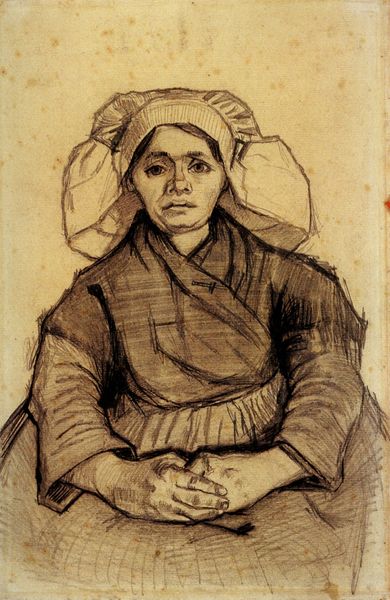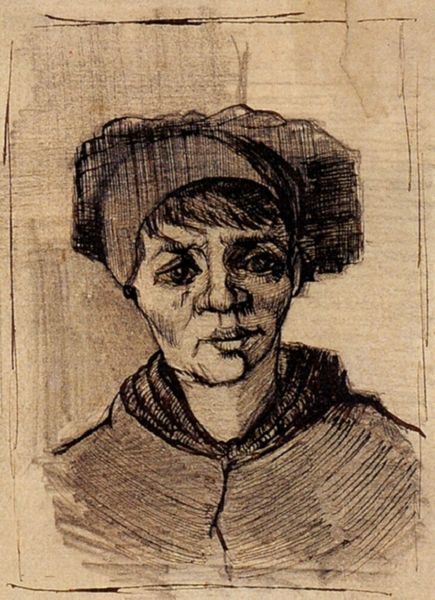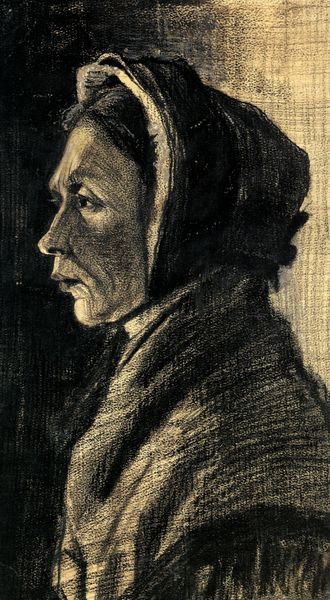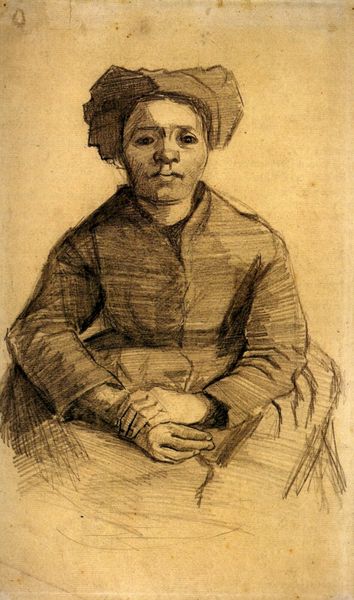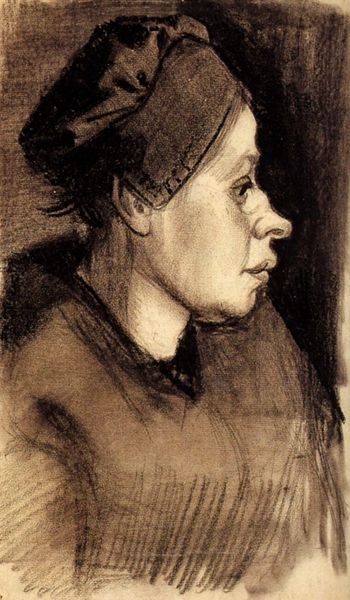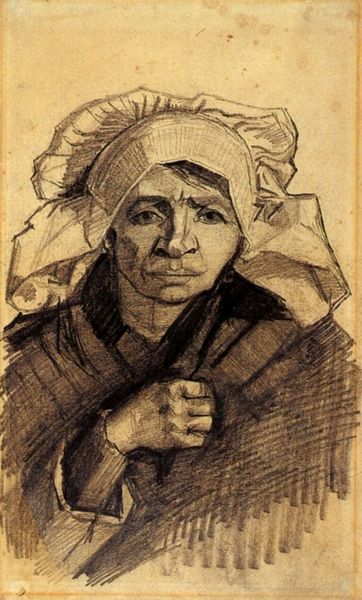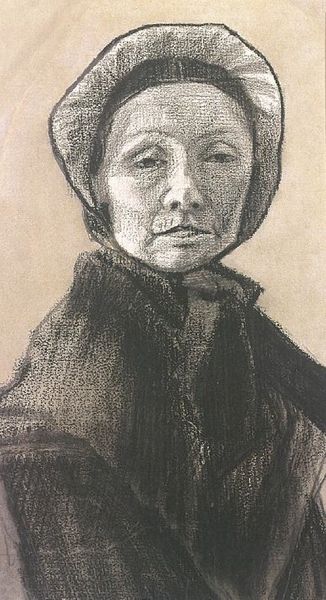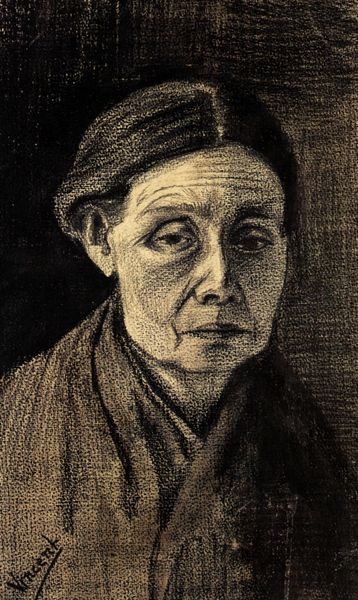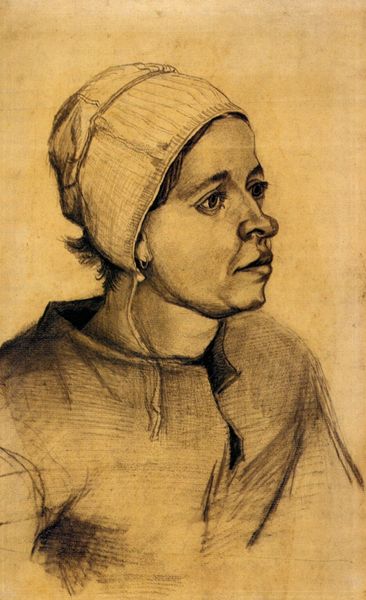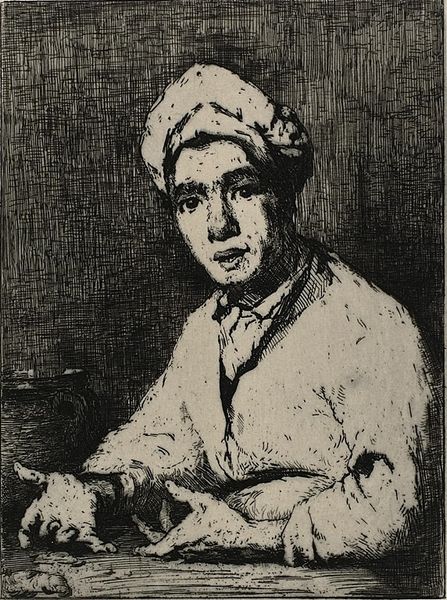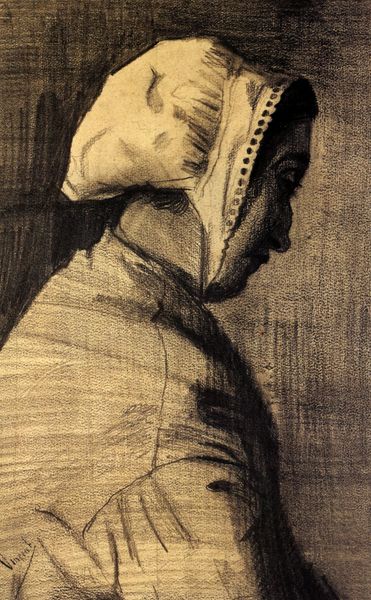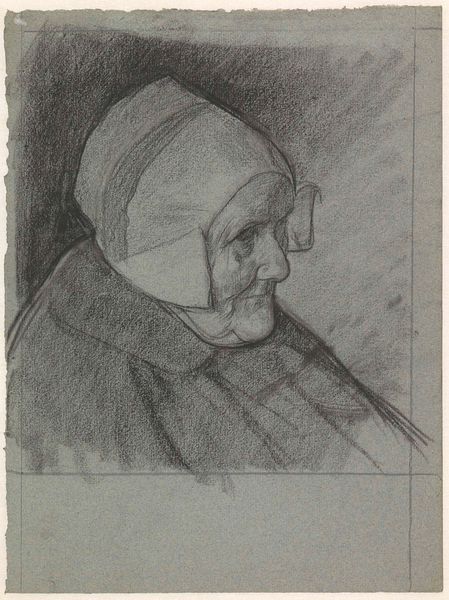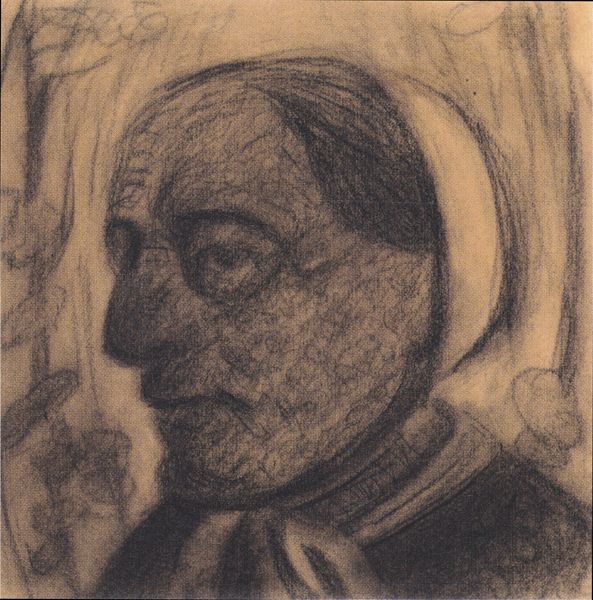
drawing, ink, charcoal
#
portrait
#
drawing
#
charcoal drawing
#
ink
#
intimism
#
portrait drawing
#
charcoal
#
post-impressionism
#
realism
Copyright: Public domain
Curator: Here we have Vincent van Gogh’s "Head of a Woman," executed in 1885. The piece is comprised of ink and charcoal on paper. Editor: Stark. That’s my first impression. The contrasts are striking, particularly on her face where light and shadow carve out a distinct sense of presence, but also weariness. Curator: It's true. This drawing possesses a deep sense of humanity. Van Gogh was intensely interested in portraying working-class people. Note the cap; it is more than a covering—it speaks to the woman’s social status and perhaps even her regional identity. Editor: Absolutely. The hatching technique he employs to define her clothing is so wonderfully raw and immediate. He doesn’t seem to care to obscure his technique, letting the material assert itself alongside the subject. It adds to that feeling of realness. Curator: Indeed. Her downward gaze suggests introspection. We read resignation but also perhaps resilience in her face. These are people facing very difficult times. Images like this become carriers of a communal story, echoing generations. Editor: The way the light falls, it creates a stark division—almost a dichotomy—within her features. The shadows aren’t merely absences of light, but palpable forces, almost creating a mask on half her face. Curator: That opposition you identify evokes a deep inner conflict, reflecting universal anxieties of the period while capturing this particular woman’s individual world. And that he chose drawing at this stage speaks to that directness of approach. Editor: Thinking about the semiotics of it, the dark strokes practically vibrate. They visually disrupt the stillness, reinforcing the woman’s weary expressiveness. And the negative space above her cap amplifies the claustrophobic sensation. Curator: He's memorializing her in this moment. Van Gogh saw value in these ‘ordinary’ faces, elevating the commonplace. The power of such intimate portraits resonates through time. Editor: Yes. Ultimately, that bold application, the way those marks accumulate to signify form, gives it staying power. It speaks even beyond her cultural context.
Comments
No comments
Be the first to comment and join the conversation on the ultimate creative platform.
